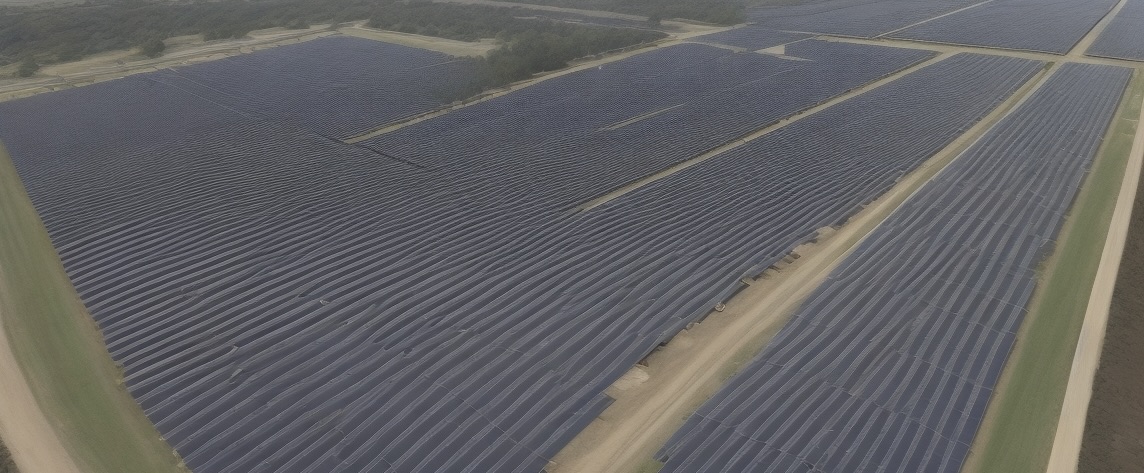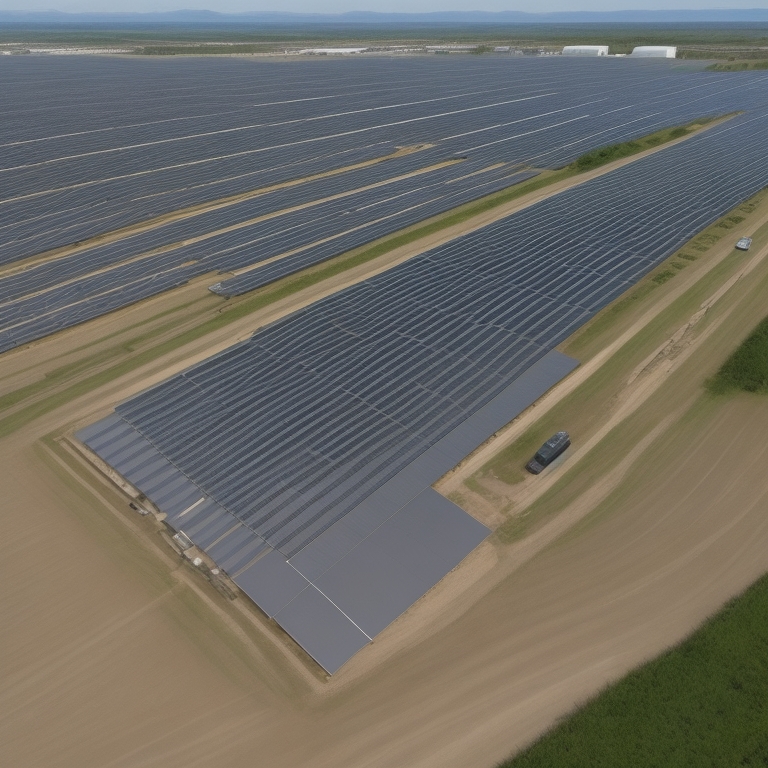
An inventive solar venture, situated atop a former landfill site near London, is poised to provide electricity for 17,000 homes – an ingenious solution to the space limitations of renewable energy in urban environments.
On a sprawling stretch of land just east of London, behind a commuter town, a multitude of 108,000 recently set up solar panels catch the sun’s rays, absorbing energy that will soon traverse cables to reach the UK’s capital city.
Traditionally, this vast site, exceeding the area of 28 football fields, might have enticed property developers eager to construct residences, a scarce commodity in this region. However, the land near South Ockendon, a half-hour train ride from central London, has remained unused for the past 25 years. Delve a few feet below the surface and the reason becomes evident: Atop this site lies a colossal trash heap of 5 million tons, concealing the potential danger of releasing toxic methane if its protective seal were to be compromised.
Anticipated to rank among the United Kingdom’s most expansive solar parks upon its launch next month, this initiative will help alleviate a frequent quandary faced by clean energy providers endeavoring to furnish power to major metropolises. While population density propels the demand for more affordable and environmentally friendly energy sources, it concurrently triggers a scarcity of available land.
Matthew Popkin, engaged in a project to promote the development of renewables on previously developed land at the Rocky Mountain Institute, a think tank based in Colorado, voiced, “Closed landfill sites offer limited options for repurposing due to the scarcity of alternatives. Regrettably, yet understandably, landfills of some form exist in most global communities as a result of our waste production.”
This solar farm boasts a capacity of 58.8 megawatts, sufficient to energize approximately 17,000 households, edging the UK closer to its objective of quintupling solar capacity by 2035. Nonetheless, accomplishing this undertaking has not been devoid of challenges. Although installing solar infrastructure on dormant waste heaps presents a logical answer to spatial constraints, it introduces technical hurdles that augmented the project’s cost.
The panels had to be affixed in batches onto weighted concrete foundations to avert the risk of these foundations, which typically penetrate the ground up to 3 meters, puncturing the landfill’s seal. Several panels required adjustable supports, accommodating potential ground shifts over time as the underlying waste decomposes.
The project’s expenditure amounts to around £850,000 ($1.1 million) per megawatt of projected output, about 5% more than a conventional solar farm on standard land. Eamonn Medley, Business Development Director at NTR Plc, the renewable investment manager spearheading this initiative, revealed that comparable endeavors have taken place in other global regions such as the United States and southern Brazil, where costs could escalate by up to 15%, contingent on landfill conditions, freight, and material prices.
As is the case with numerous other renewable ventures, inflation has emerged as a substantial obstacle. Nevertheless, Medley and his team pressed forward, managing installation without undue delay, partially due to a contract securing the sale of all energy generated over the initial decade to BT Group Plc. Following this period, the site will vend its energy at wholesale market rates.
Medley remarked during a recent park tour, “We witnessed fluctuations in module pricing, steel costs, transport expenses, wholesale prices, and exchange rates – inflation touched every aspect.”
Presently, material costs are descending due to a glut of solar components from China inundating the market, precipitating a plummet in spot prices, as indicated by BloombergNEF data. This, in conjunction with the growing viability of building on untapped lands, could potentially catalyze a fresh wave of development projects. BloombergNEF forecasts a surge to over two gigawatts of installed solar capacity in the UK this year, compared to 1.2 gigawatts in 2022.
While expansive solar farms are typically established on dormant lands, such locations are often scarce in proximity to energy-hungry urban hubs. The most extensive park in the UK, with a capacity of 72 megawatts, is situated in North Wales. Another even more sizable park is in progress near Faversham in Kent, a little over 50 miles away from London.
Within the UK, numerous new renewable ventures, particularly those in remote locales, confront constraints arising from the absence of grid connections, leading to waits of up to a decade for connection in some instances. However, this wasn’t an impediment for Ockendon, as it was procured with a preexisting grid connection offer.
Popkin, from the Rocky Mountain Institute, emphasizes that transmission, distribution, and proximity to energy consumption are pivotal factors when formulating solar initiatives. He states, “In the majority of cases, solar projects on landfill sites present a mutually beneficial solution for repurposing these areas to fulfill future energy demands.”
Save for the black plastic methane vents interspersed among the solar panels on the Ockendon site, one would be oblivious to the strata of decomposing refuse beneath their feet. Enormous landfill sites such as this are prevalent near major cities, frequently lying dormant.
Medley ponders, “The question is, can we attain the desired market returns on renewable projects built atop landfills, even though such projects necessitate higher investments than the norm? It’s challenging, but it’s feasible.”

